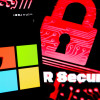The Evolution of Exploit Sophistication
When we look at the exploits that Adobe patched from February and March of this year, it is clear that today’s zero-day exploits are increasingly more sophisticated. This increase in sophistication is not limited to the skills needed to find and exploit the vulnerability. The code used to exploit the environment is also more robust in terms of code quality and testing. In short, exploit creation today requires the same level of rigor as professional software engineering projects.
Today’s advanced exploits need to be written to work in any target environment. For instance, February’s Reader 0-day supported 10 different versions of Reader with 2 sub-versions dependent on the end-user’s language. In addition, Flash Player CVE-2013-0634 had shell code for Windows XP, Vista, Windows 7, Server 2003, Server 2003 R2, Server 2008 and Server 2008 R2 as well as supporting six versions of Flash Player. Variants of CVE-2013-0634 also supported Firefox and Safari on Mac OS X. An exploit developer would need a robust testing environment to ensure that the exploit would work in that many different environments for each version of Flash Player. The exploit writers even took into account different CPU architectures by including a signed 32-bit payload and a 64-bit payload. This reflects the fact that these exploits are written with professional code quality and stability requirements for distribution across a dynamic target base.










































































